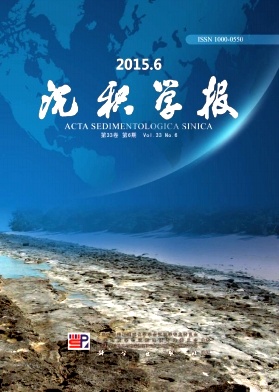Petrogenesis and Sedimentary Environment of Siliceous Rocks of Yangjiabao Formation in Zhushan Area, Northwestern Hubei
doi: 10.14027/j.cnki.cjxb.2015.06.003
- Received Date: 2014-08-11
- Rev Recd Date: 2015-01-29
- Publish Date: 2015-12-10
-
Key words:
- Yangjiabao Formation /
- siliceous rocks /
- depositional environment /
- geochemistry
Abstract: Deepwater siliceous rocks developed during the Early Cambrian in Zhushan area which located on the north margin of the Yangtze block. These rocks mainly comprise pure siliceous rocks, with little dolomite and shale. The siliceous rocks are composed of microcrystalline quartz(content of more than 85%) and some carbon, flint and sericite. They show high SiO2 content(93.4%, on average) by geochemical analysis. Contents of Al2O3 and TiO2, are as low as 0.19%~1.45% and 0.01%~0.09%, respectively. And TFe2O3 accounts for 0.053%~0.342%. The ratio of Al/(Al+Fe+Mn) is from 0.58 to 0.83(0.73, on average), with Eu/Eu* being in 0.74~3.61 range(1.65, on average), which indicates the silicon comes from biological activities and hydrothermal injection. Meanwhile, the ratio of TFe2O3/TiO2 and Al2O3/(Al2O3+Fe2O3) are evidently low to 2.16~12.56 and 0.65~0.87 Y is positive anomaly(Y/Ho value is 34.81~60.19) and Ce is negative anomaly(Ce/Ce* value is 0.28~0.92), implying that these rocks were deposited in an ocean basin with no input of terrigenous materials. Negative anomaly of Ce are less evident to upside, which records the expansion of the passive continental margin rift basin on the northern Yangtze block.
| Citation: | LIU Hao, XU DaLiang, NIU ZhiJun, PENG LianHong, WEI YunXu, ZHAO XiaoMing. Petrogenesis and Sedimentary Environment of Siliceous Rocks of Yangjiabao Formation in Zhushan Area, Northwestern Hubei[J]. Acta Sedimentologica Sinica, 2015, 33(6): 1087-1096. doi: 10.14027/j.cnki.cjxb.2015.06.003 |






 DownLoad:
DownLoad: